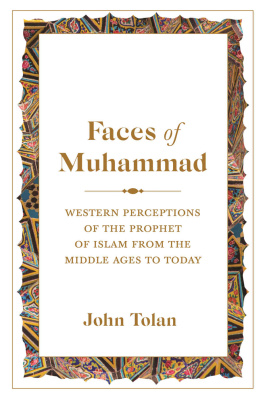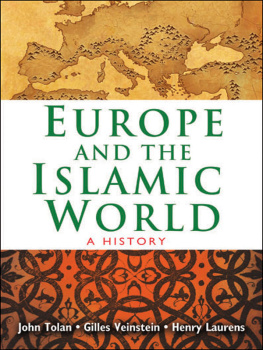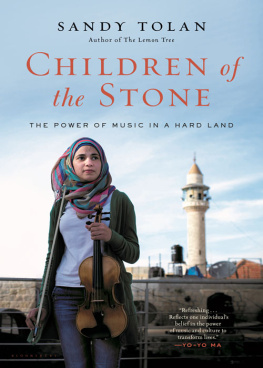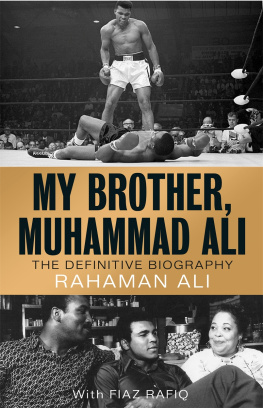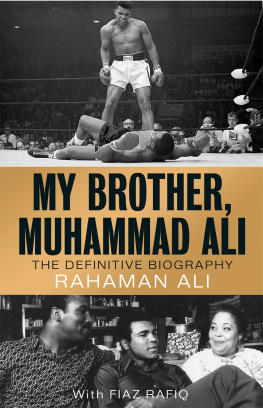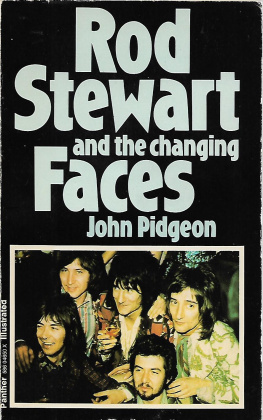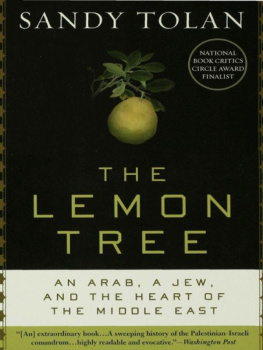John Tolan - Faces of Muhammad
Here you can read online John Tolan - Faces of Muhammad full text of the book (entire story) in english for free. Download pdf and epub, get meaning, cover and reviews about this ebook. year: 2019, publisher: Princeton University Press, genre: Religion. Description of the work, (preface) as well as reviews are available. Best literature library LitArk.com created for fans of good reading and offers a wide selection of genres:
Romance novel
Science fiction
Adventure
Detective
Science
History
Home and family
Prose
Art
Politics
Computer
Non-fiction
Religion
Business
Children
Humor
Choose a favorite category and find really read worthwhile books. Enjoy immersion in the world of imagination, feel the emotions of the characters or learn something new for yourself, make an fascinating discovery.
- Book:Faces of Muhammad
- Author:
- Publisher:Princeton University Press
- Genre:
- Year:2019
- Rating:5 / 5
- Favourites:Add to favourites
- Your mark:
- 100
- 1
- 2
- 3
- 4
- 5
Faces of Muhammad: summary, description and annotation
We offer to read an annotation, description, summary or preface (depends on what the author of the book "Faces of Muhammad" wrote himself). If you haven't found the necessary information about the book — write in the comments, we will try to find it.
Faces of Muhammad — read online for free the complete book (whole text) full work
Below is the text of the book, divided by pages. System saving the place of the last page read, allows you to conveniently read the book "Faces of Muhammad" online for free, without having to search again every time where you left off. Put a bookmark, and you can go to the page where you finished reading at any time.
Font size:
Interval:
Bookmark:
PROPHET OF ISLAM FROM THE
MIDDLE AGES TO TODAY

PRINCETON UNIVERSITY PRESS
PRINCETON & OXFORD
Copyright 2019 by Princeton University Press
Published by Princeton University Press
41 William Street, Princeton, New Jersey 08540
6 Oxford Street, Woodstock, Oxfordshire OX20 1TR
press.princeton.edu
All Rights Reserved
Library of Congress Control Number: 2019935406
ISBN: 978-0-691-16706-0
eISBN: 978-0-691-118611-5 (ebook)
Version 1.0
British Library Cataloging-in-Publication Data is available
Editorial: Fred Appel and Thalia Leaf
Production Editorial: Karen Carter
Jacket Design: Layla Mac Rory
Jacket Art: Shutterstock
Production: Jacqueline Poirier
Publicity: Tayler Lord and Kathryn Stevens
Copyeditor: Dawn Hall
To my teachers, especially Irene Harney, Steve Bruemmer, Mark Hilgendorf, Jim Kearny, John Stephens, and Bernie McGinn and Rob Bartlett.
\
Take what is given freely, enjoin what is good, and turn away from the ignorant.
QURN 7:199
ix
xi
. Eugne Delacroix (17981863), tude pour Mahomet et son ange. Drawing with watercolor, nineteenth century. Paris, Muse du Louvre (RF 10017). 17
. Sansadoines destroys the idol of Mahomet. Chanson dAntioche, Bibilothque Nationale de France, MS Franais 786, f 186v (late thirteenth century). 27
. The Prophet Isaiah chastises two Jews worshipping a Mahomet. Stained glass window in the Sainte Chapelle, Paris (12421248). 38
. The flight into Egypt, from the Holkham picture bible (early fourteenth century). British Library Add. 47682, f.15. England, ca. 13201330. 39
. Tancred destroys the idol of Mahomet in Jerusalem. Antoine Caillot, Tableau des croisades pour la conquete de la terre-sainte (Paris, 1843), frontispiece. 42
. Mahomet preaching with a dove on his shoulder; a bull brings the Qurn on his horns. Illustration ca. 14091425, in Laurent de Premierfait, Des cas des nobles hommes et femmes, drawn by the Master of Rohan. Paris, BNF MS Franais 226, f. 243 (XVe s.). 45
. Machomeete preaching, with doves at his ears. Lydgate, Fall of Princes, London BL Harley 1766, f. 223. 67
. Machomeete killed by swine. Lygdate, Fall of Princes, London BL Harley 1766, f. 224. 69
. Saracen praying before Mahomets floating tomb in Mecca. Catalan Atlas (1375), Paris, BNF, MS Esp. 30. 70
. Lopo Homem, Miller Atlas, Lisbon, 1519 (BnF Cartes et plans, GE DD 683 RES f 3), India, The Indian Ocean and Arabia. 71
. Limposteur Mahomet et le sducteur Calvin, Almanach pour lan de grace, 1687. Bibliothque nationale de France, Paris, France. 102
. 112
. Pilgrims in adoration before Mahomets floating coffin; de Bry & de Bry, Acta Mechmeti I. Saracenorum Principis, p. 26. 125
. Dove and bull miracles, from 1696 Dutch translation of the Qurn. 127
. Luigi Primo Gentile, Triunfo dellImmacolata (1663), Santa Maria in Monserrato degli Spagnoli, Rome. 130
. Mahomet crowned king has idols destroyed everywhere. Boulainvilliers, Vie de Mahomed, 2nd ed. (Amsterdam, 1731), p. 430. 161
. Muhammad, detail from the mural by Louis Bouquet, Salon du Ministre in the Muse des Colonies, Paris, 1931. 234
THIS BOOK IS THE FRUIT of a career working on the history of how European Christians have understood Islam and how they have made sense of its rival claims to the heritage of Abraham. More immediately, it is the result of a proposal by Fred Appel of Princeton University Press who saw the need for a scholarly overview of the history of European perceptions of the prophet of Islam. My thanks to Fred for his encouragement and for accompanying this project to completion.
I received generous assistance from the Kulturwissenschaftliches Kolleg at the University of Konstanz, where I had the honor and pleasure of serving as a research fellow from January to June of 2016, allowing me precious uninterrupted time for reading and research along the banks of the Rhine. My warm thanks to the extremely helpful staff, in particular Fred Girod, Christina Thoma, Daniela Gpfrich, and Carolin Schulz. Special thanks also to Dorothea Weltecke for inviting me to the Kolleg.
I have presented parts of this book in various seminars and conferences in Europe, North America, and Iran: in particular at the conference Crossing Boundaries, Creating Images: In Search of the Prophet Muhammad in Literary and Visual Traditions at the Kunsthistorisches Institut, Florence (2009); at the colloquium Representations of Muhammad at the University of Edinburgh (2015); at the conference Mimetic Theory and Islam at the University of Innsbruck (2016); at the workshop The Prophet Muhammad in the Eyes of Europeans at the University of Isfahan (2016); at the symposium The Location of Europe: Shared and Divided Memories in the Global Age at Schloss Herrenhausen, Hannover (2016); at the seminar Logiques dEmpire at the Universit Jean Jaurs, Toulouse (2017); and at the symposium Processes of Entanglement and Disentanglement at the University of Mnster (2017). Many thanks to those who participated in these events and prodded me to explore these issues in greater precision and depth and in particular to those who invited me: Daniel Baloup, Wolfram Drews, Etienne Franois, Tony Gorman, Christiane Gruber, Asghar Montazerolghaem, Wolfgang Palaver, Thomas Serrier, and Avinoam Shalem.
Thanks to Ashley Miller for information on Louis Bouquets painting of Muhammad and to Megan Holmes for help in tracking down images. Thanks to Alberto Saviello for help and advice concerning several images. Thanks to Ann Watt for precious biographical information concerning her father, Montgomery Watt. Special thanks to those who read and offered corrections and commentaries to earlier versions of one or more of the chapters of this book: Dominique Avon, Ruchama Johnston-Bloom, Nabil Matar, and Karen Spierling. And above all to those who read through the whole manuscript and gave valuable feedback: Andrea Celli, Ana Echevarria, Ziad Elmarsafy, Christiane Gruber, Suleiman Mourad, and Amy Remensnyder.
THE PROPHET MUHAMMAD IN WESTERN DISCOURSE
ON OCTOBER 2, 1808, Johann Wolfgang von Goethe and Napoleon Bonaparte met in Erfurt. The two men discussed politics and chatted about literature. When Napoleon learned that Goethe had translated Voltaires play Mahomet, ou le fanatisme into German, he declared that it was not a good play, that it painted an unworthy portrait of a world conqueror, a great man who had changed the course of history. In this discussion, Napoleon and Goethe talked about Muhammad, or perhaps better said, about Mahomet, the fictitious scoundrel that Voltaire made into the epitome of fanaticism (in order to attack the Catholic Church), the charismatic leader and military genius who served as a role model for Napoleon; for Goethe he would become, in subsequent writings, the archetypal prophet, a figure that allowed him to explore the interstices between prophet and poet. For these three men, as for many other Europeans, Mahomet is not merely a distant historical character, prophet of a foreign religion, he is a figure whose story and whose living legacy are a constant source of curiosity, worry, astonishment, and admiration.
Not all European writers on Muhammad show him the admiration and respect that we find in Bonaparte and Goethe, of course. Much of what is written about him is hostile. It would have been easy for me to compile a chronicle of that hostility, a catalog of disdain, fear, and insult from the earliest Christian polemical texts against Islam to the shrill declarations of politicians like Geert Wilders, parliamentarian of the Partij voor de Vrijheid (Dutch extreme right) who, to discredit Islam, attacks its prophet, whom he calls a terrorist, a pedophile, and psychopath. The 2005 controversy over the cartoons of Muhammad published in the Danish newspaper
Font size:
Interval:
Bookmark:
Similar books «Faces of Muhammad»
Look at similar books to Faces of Muhammad. We have selected literature similar in name and meaning in the hope of providing readers with more options to find new, interesting, not yet read works.
Discussion, reviews of the book Faces of Muhammad and just readers' own opinions. Leave your comments, write what you think about the work, its meaning or the main characters. Specify what exactly you liked and what you didn't like, and why you think so.

